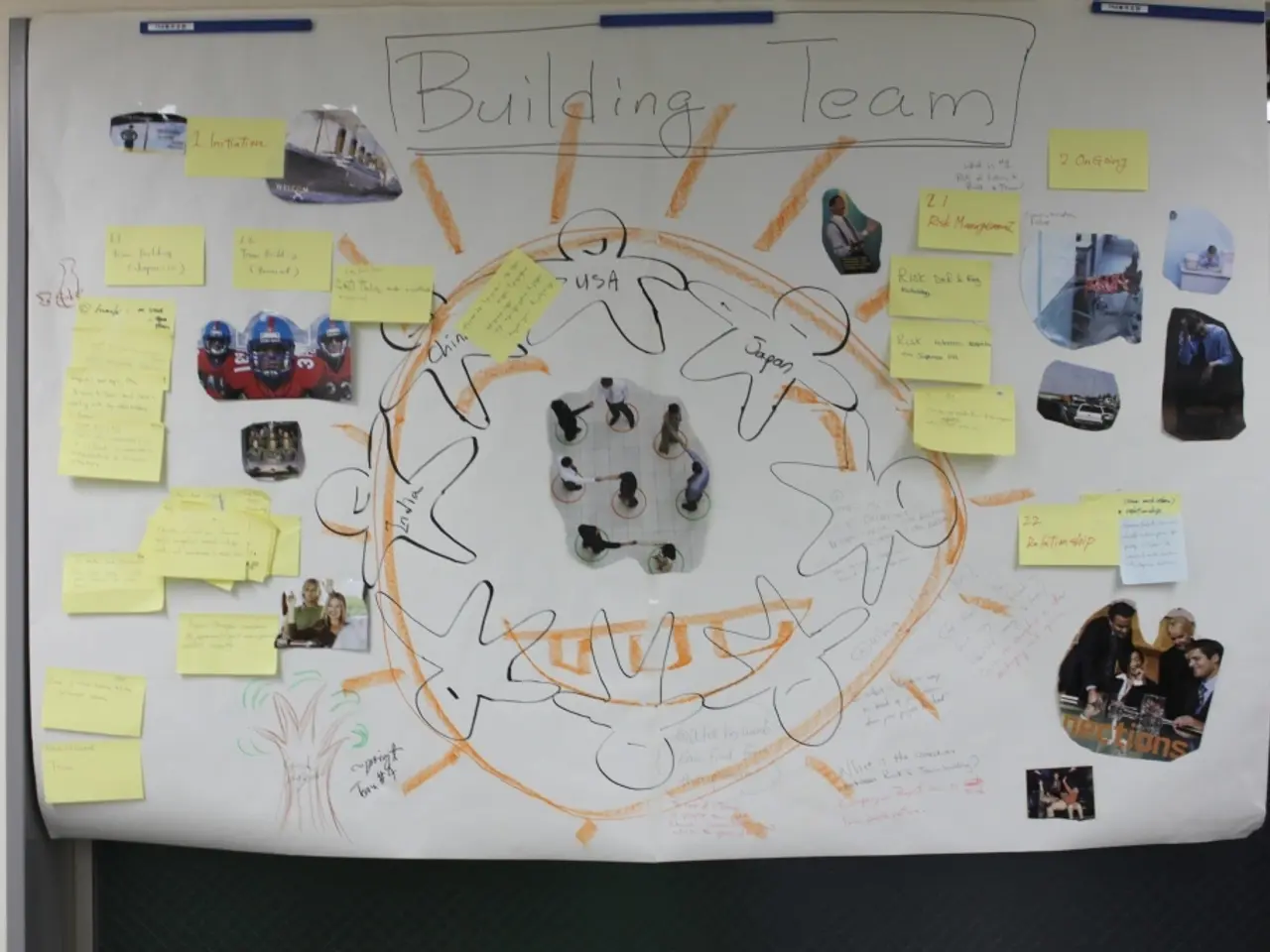Daily Guide for Preschoolers' Morning Activities
Mindfulness practices and visual schedules are becoming increasingly popular tools for preschoolers, offering a unique blend of emotional regulation and structure. These techniques, designed to be simple and engaging, help young children navigate the complexities of daily life.
Activities such as weather check-ins, bubble breathing practice, and gratitude jars teach emotional regulation, while quick breakfast options like Greek yogurt with berries, whole-grain toast with almond butter, or oatmeal with chia seeds provide a nutritious start to the day, appealing to little ones.
Mindfulness practices, like flower breaths, play a crucial role in helping preschoolers focus and manage emotions. Creative twists on everyday tasks, like toothbrush tag, hairbrush karaoke, and outfit challenges, make self-care tasks more engaging for children.
Visual schedules, presented in various formats such as vertical strips, dry-erase boards, binders, or digital apps, provide predictability, reduce anxiety, and help children understand expectations. They also reduce tantrums, power struggles, and challenging behaviors, support smoother transitions, promote independence, and assist in developing sequencing and time concepts.
These schedules, often illustrated with photos, drawings, or icons, can be tailored to suit home use or school routines. They are effective tools that not only ease daily transitions but also help young children develop a greater sense of control over their environment, thereby enhancing self-esteem.
Combined physical and mindful activities, like yoga storytime, boost focus and flexibility. Games such as scarf tossing, glitter calm-down jars, and yoga storytime promote body-mind connection. When parents join in these activities with their children, it strengthens bonds and teaches lifelong skills.
Turning hygiene activities into sensory experiences, like using color-changing bath tablets or waterproof music players, makes them feel like playtime. Creative self-care activities, such as dance parties, sensory play with kinetic sand, or DIY "calm jars" filled with glitter, engage preschoolers' senses while teaching them to prioritize well-being.
Offering choices in self-care tasks builds decision-making skills without overwhelming preschoolers. Dim lights, soft music, and quiet activities like reading or gentle stretching create a calming bedtime environment. Celebrating small wins in the preschooler's growing independence helps keep motivation high.
Routines should be flexible, with adjustments made based on children's growth, seasons, and daily needs. Preschoolers can engage in physical activities like obstacle courses and animal races for coordination and energy burn. A special corner with textured rugs and resistance bands can be created for rotating activities weekly to maintain interest.
In conclusion, embracing mindfulness and visual schedules offers numerous benefits for preschoolers, fostering emotional regulation, independence, and a sense of control. These techniques, when combined with creative self-care activities, provide a well-rounded approach to nurturing young minds.
- Gratitude jars, as part of mindfulness practices, serve as simple and engaging tools that help preschoolers practice gratitude, contributing to emotional regulation.
- Comprehending science behind health-and-wellness, parents can make informed decisions about quick breakfast options, ensuring their child gets a nutritious start to the day.
- Integrating mindfulness practices like flower breaths into parenting lifestyle fosters strong emotional regulation and focus in children, enhancing their daily life experiences.
- Incorporating sensory experiences in self-care activities, such as using color-changing bath tablets, promotes emotional connection and well-being, aspects often emphasized in the home-and-garden segment.
- Delving deeper into education-and-self-development, understanding the underlying wisdom that supports visual schedules and mindfulness practices can help parents make meaningful decisions for their child's growth.





